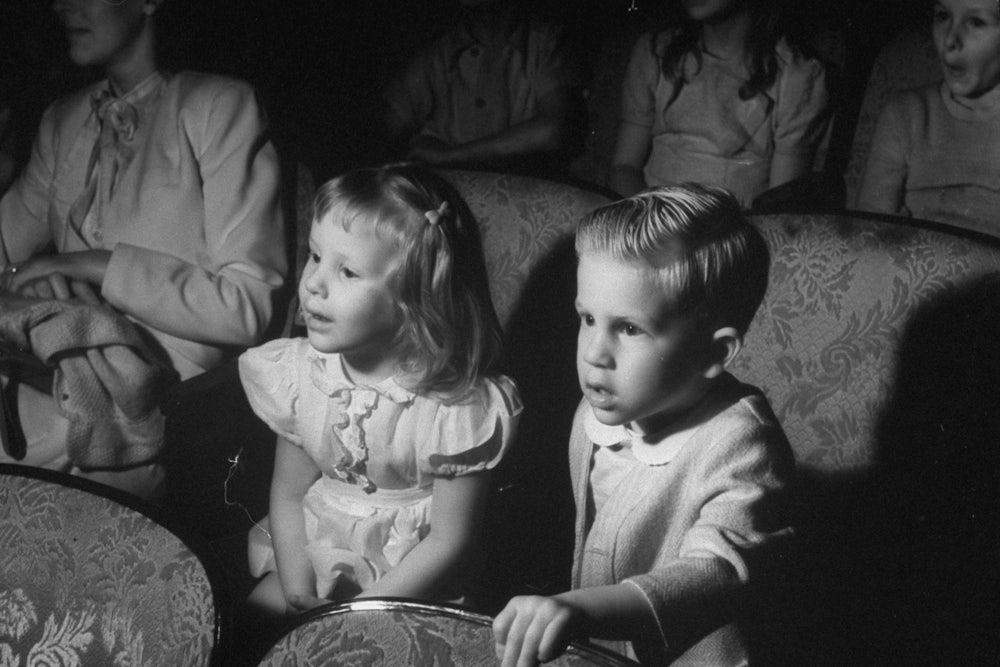The new Disney cartoon Bambi is interesting because it’s the first one that’s been entirely unpleasant. The robust irrationality of the mouse comedies has been squelched completely by the syrup that has been gradually flowing over the Disney way. In an attempt to ape the trumped-up realism of flesh and blood movies, he has given up fantasy, which was pretty much the magic element. Mickey Mouse and Donald Duck lived in a beautiful escape land, where they flew through the air, swam under water, died a thousand deaths and lived to see the end of each picture. These comedies were perfectly suited to a moving camera; held down by nothing human, they had terrific pace and action. It was a wonderful movie shambles.
But not Bambi. The animals here behave just as Hollywood thinks we do, and behaving that way it’s old stuff and boring because of it. Everything is straight-faced, with feet flat on the ground. The animals give birth, grow up, fall in love, get shot at and killed. Besides, it is moral, starched heavy. The hero is a deer named Bambi, whose mother is killed by the villain, Mr. Man, whose sweetheart is attacked by Mr. Man’s dogs, whose terrestrial paradise is destroyed by Mr. Man’s fire. There’s no harm in Disney’s being righteous, unless, as in this picture, the accent is on the cute and pretty rather than on the comedy invention which produced the righteous Donald. Only so much amusement can come from fairylike naïveté, after that it’s just one long squirm. Along the way Bambi has all the stereotyped mechanisms of the formula movie—the heavy side to the love triangle, the fight for the doe’s (“Feline”) affections, the wise old king deer whose place Bambi wins over in the closing shots.
In keeping with this new spirit, Bambi talks itself dizzy to the exclusion of movement and action. The animals are horribly equipped with human voices, not the neuter piping of Mickey or the incoherent gabbling of Donald, which were so perfectly right, but the cuddly or waspish voices of ladies and gentlemen. Like their counterparts in the regular movies, the animals here gather round and trade chitchat, very sweet, and it is grotesque. And there are songs everywhere, coming out of the mountains, from under the trees, flooding you with the most maudlin sounds a director ever let happen. Example: “Drip, Drip, Drop, Little April Shower.”
The bogus art which has been creeping into the Disney pictures is really hammered at you in this one. Again, it is an affectation of reality, like a Maxfield Parrish painting. No more the flat house-paint colors of the early comedies, in which there were no half-tones or dull intensities, with every red the same hot, pure scarlet, every black like coal, and nothing flimsily grayed. The films are now doused in sweet sugary tints, flowery violets, fancy-pants pinks, and he’ll waste ten minutes if he can end up with a gold-splashed sunset. Whereas the early color was fresh, simple and in the comedy spirit, this new development is a synthetic reveling in vulgarity. The worst effect of all this artiness is the preference now for cheap painting, the Vanishing American kind you buy in Kress’s, in place of the movement which was the main thing before. No longer do the trees and flowers carry on like mad: they are there for pretty; and as the camera moves slowly over them and you drink up all this tinseled loveliness, there is the lone deer on the distant hilltop, a gold aura around him.
Mickey wouldn’t be caught dead in this.
